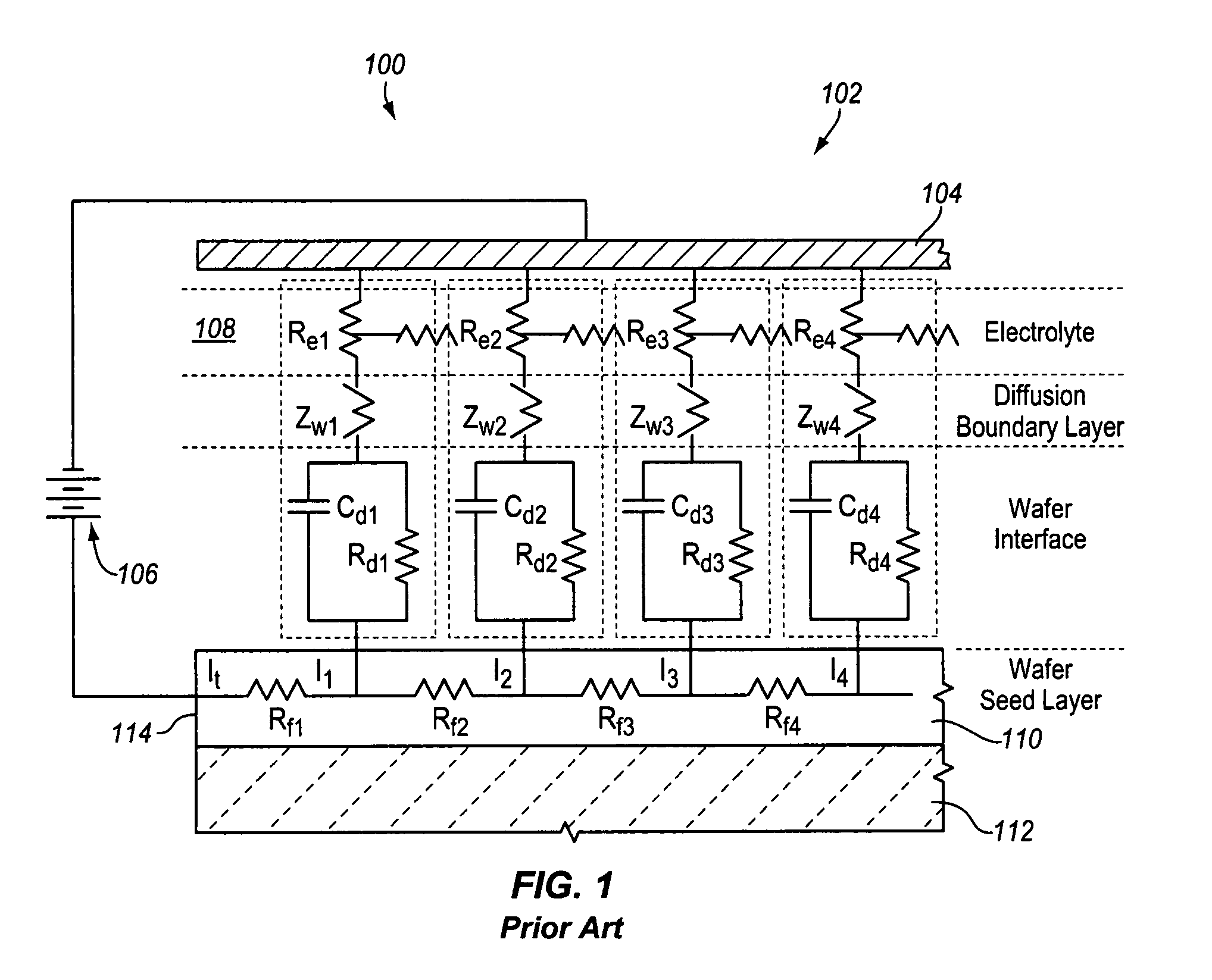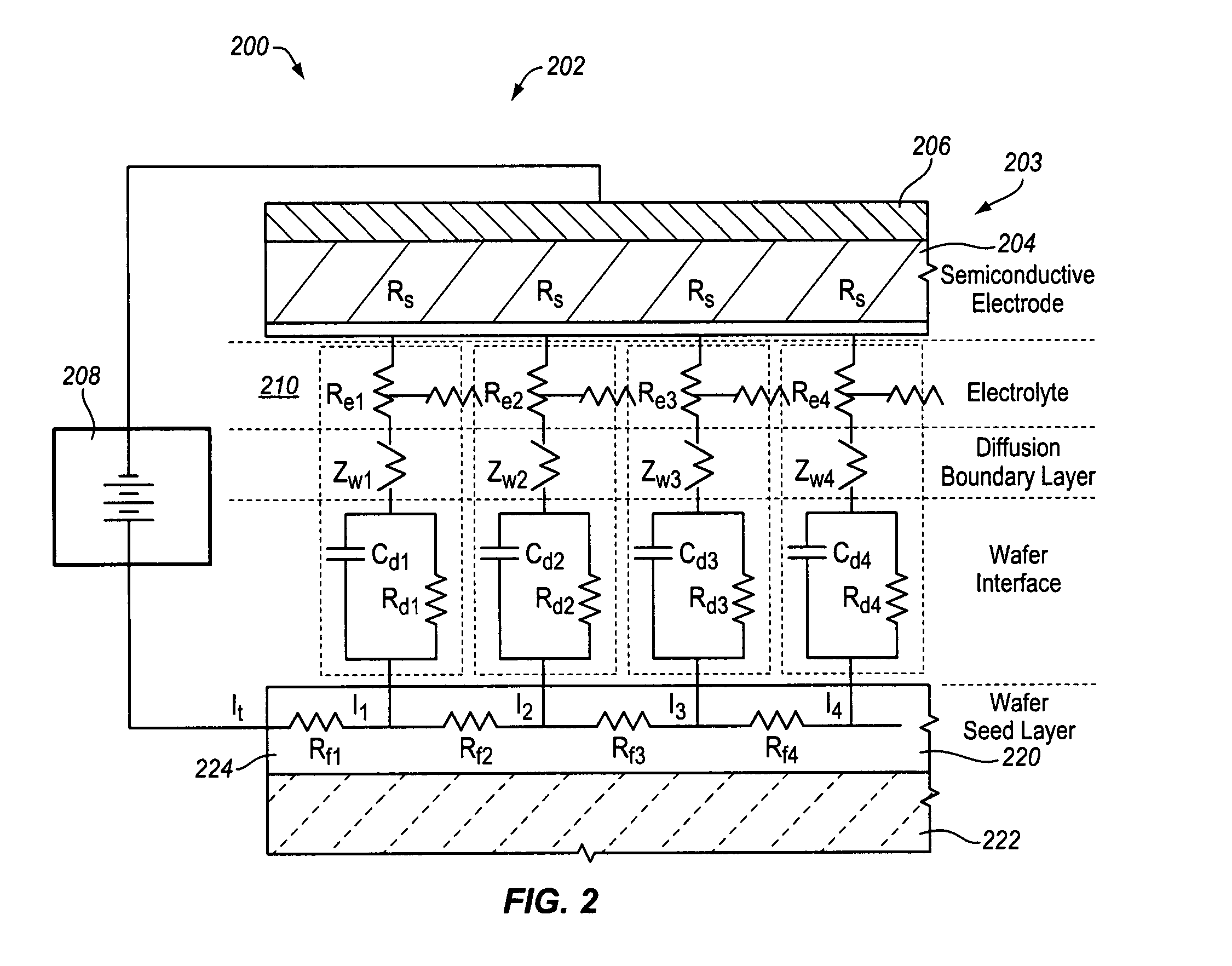Semiconductive counter electrode for electrolytic current distribution control
a counter electrode and electrolytic current technology, applied in the field of electrolytic techniques, can solve the problems of limiting the range of usable or obtainable electrolytic resistivity, unable to enable difficult to achieve uniform electroplating of metal, etc., to achieve the effect of enhancing electrolytic current distribution and improving electrolytic current distribution
- Summary
- Abstract
- Description
- Claims
- Application Information
AI Technical Summary
Benefits of technology
Problems solved by technology
Method used
Image
Examples
example 1
[0147]A prophetic example of embodiments in accordance with the invention includes electroplating of copper metal onto the surface of a substrate wafer having a copper metal seed layer.
[0148]A plating bath container, such as treatment container 504 as depicted in FIG. 15, is filled with an electroplating solution comprising: 40 grams per liter (g / 1) of dissolved copper metal, added as copper sulfate pentahydrate (CuSO4.5H20); 10 g / l H2SO4; 50 milligrams per liter (mg / l) chloride ion, added as HCl; 6 milliliters per liter (ml / l) VIAFORM® accelerator; 2.5 ml / l VIAFORM® leveler; 2 ml / l (i.e., about 200 ppm) VIAFORM® suppressor. A semiconductive counter electrode assembly in accordance with the invention is located at the bottom of the plating bath container. The semiconductive counter electrode assembly comprises a cylindrical electric current buss and a semiconductive counter electrode (SCE). The SCE is mounted on and covers the cylindrical electric current buss. The SCE serves as a s...
PUM
| Property | Measurement | Unit |
|---|---|---|
| width | aaaaa | aaaaa |
| thickness | aaaaa | aaaaa |
| thickness | aaaaa | aaaaa |
Abstract
Description
Claims
Application Information
 Login to View More
Login to View More - R&D
- Intellectual Property
- Life Sciences
- Materials
- Tech Scout
- Unparalleled Data Quality
- Higher Quality Content
- 60% Fewer Hallucinations
Browse by: Latest US Patents, China's latest patents, Technical Efficacy Thesaurus, Application Domain, Technology Topic, Popular Technical Reports.
© 2025 PatSnap. All rights reserved.Legal|Privacy policy|Modern Slavery Act Transparency Statement|Sitemap|About US| Contact US: help@patsnap.com



